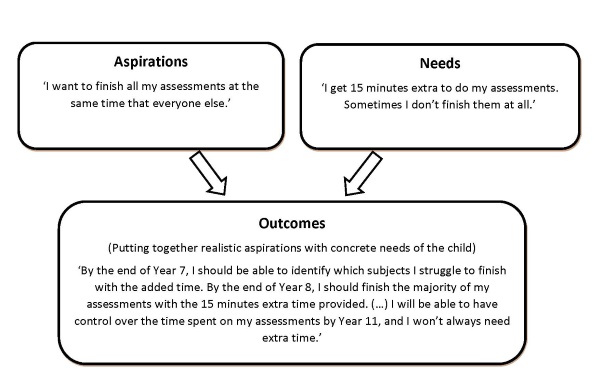Schools have a duty to put pupils' needs and aspirations at the centre of SEND provision. It is vital that we understand 'outcomes', and the steps we can take to meet them.

Throughout my time as a teaching assistant, I've often discussed:
Gareth has asked if I could encapsulate some of my thoughts; what I think outcomes are, and how we might set out to meet them.
One could define an outcome as ‘the benefit or difference made to an individual as a result of a change’ (Amide, 2015). This should be from a person-centered perspective, and enshrine a pupil’s needs and aspirations.
An outcome will not always signal change
Outcomes should be tailored to (and informed by) pupils and parents/carers – the importance of co-production cannot be overstated in this respect.

An example of outcomes being informed by a pupil's needs and aspirations.
An outcome will not always signal change, as it can be predicated on something that already is working well; this must be part of a personalised discussion/process; not ‘done to’ but produced collaboratively.
In line with this pupil-centered approach, the EHCP process should identify a pupil’s needs (from the Needs Assessment), and assimilate the strategies that already work with ones that would benefit from further consideration.
A cyclical process
EHCPs must formulate specific actions to address needs and meet outcomes. Considering the example above, actions could include:
These actions should be checked regularly by the SENCO. If needs have changed, or actions prove unsuccessful, the whole process must be re-evaluated in conversation with the pupil.
The importance of co-production cannot be overstated
Remember that as with people, an outcome is always likely to change.
As with life, the process is a cycle: do keep 'Assess, Plan, Do, Review' in mind!